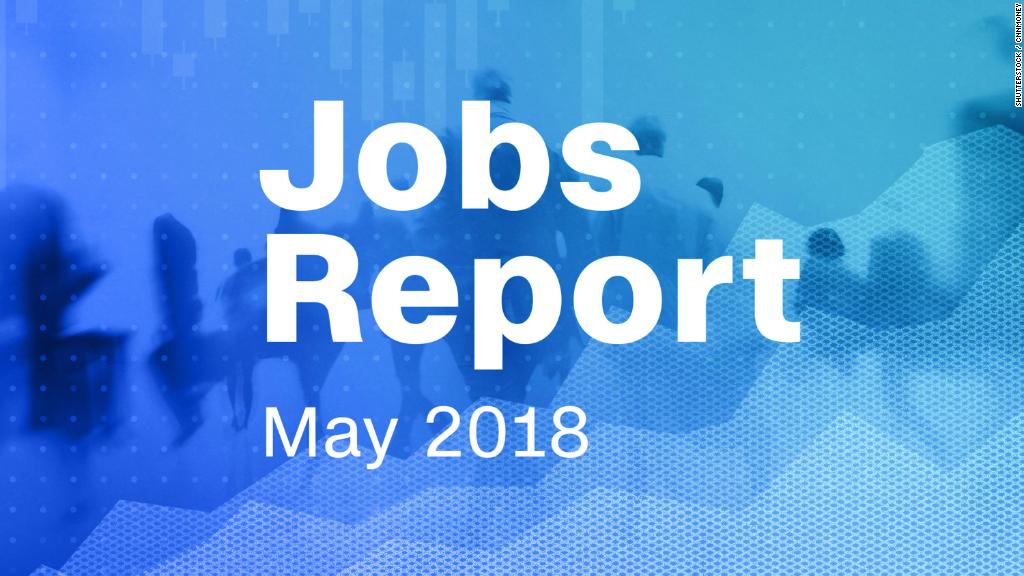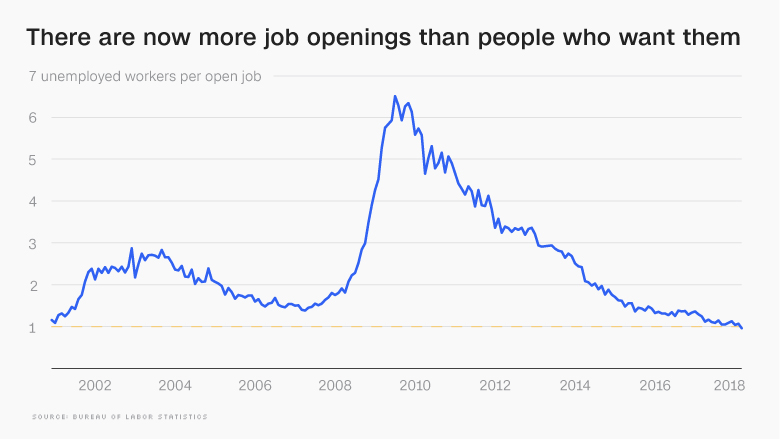
Want more evidence that America's economy needs more workers? For the first time in at least 20 years, there are now more job openings than there are people looking for work.
The ratio of unemployed workers to job openings dropped below one in April for the first time since the Labor Department started collecting data in 2000, the agency reported Tuesday.
The total number of job openings was 6.7 million at the end of April, with an especially large increase in manufacturing jobs.
One of the reasons for this shortfall: The open jobs and the people looking for work aren't in the same place. Also, available workers might not have the skills employers are looking for.
Related: The US economy needs seniors to work longer
Even with all the advances in job search platforms like LinkedIn, companies still have trouble finding workers with the exact qualifications they need, and very often end up hiring people from competitors rather than out of unemployment.

Partly for that reason, the amount of time it takes for the median unemployed person to find their next job is still nearly 10 weeks, above the historical average.
A broader measure of unemployment, which includes workers who haven't looked for a job in the last four months and also those working part-time even though they'd rather work full-time, is still higher than it was in the late 2000s. That means there may still be workers on the sidelines ready to take opportunities that might present themselves.
Those sidelined workers might also be waiting for better offers. While wage growth has picked up since the beginning of the recovery, it's still only running at about 3% per year, according to the Federal Reserve Board of Atlanta — significantly below the 5% level it reached in the early 2000s.
Related: The case for raising the minimum wage keeps getting stronger
Low wage growth has puzzled economists, since employers should start paying more as workers become more scarce. It's not clear whether the extremely low worker-to-job ratio will change that.
One study released Tuesday by the Federal Reserve Bank of Boston suggested that the large number of people working informal jobs, such as driving for Uber, may be dragging down overall wage growth even as the tight job market pushes pay up.


